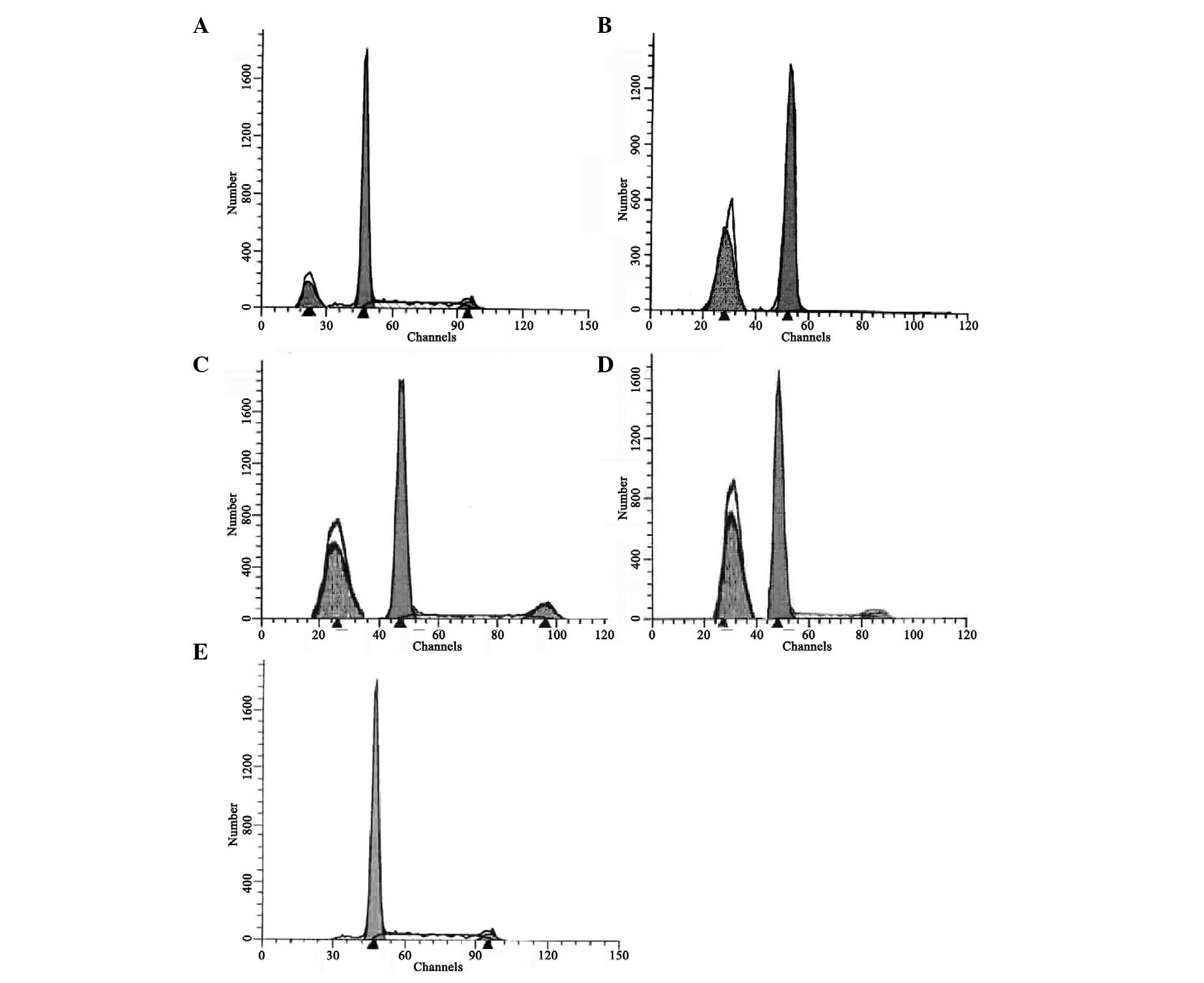|
1
|
Jellinger KA and Attems J: Prevalence of
dementia disorders in the oldest-old: an autopsy study. Acta
Neuropathol. 119:421–433. 2010. View Article : Google Scholar : PubMed/NCBI
|
|
2
|
Tam JH and Pasternak SH: Amyloid and
Alzheimer’s disease: inside and out. Can J Neurol Sci. 39:286–298.
2012.
|
|
3
|
Schmidt AM, Yan SD, Yan SF and Stern DM:
The biology of the receptor for advanced glycation end products and
its ligands. Biochim Biophys Acta. 1498:99–111. 2000. View Article : Google Scholar : PubMed/NCBI
|
|
4
|
Yan SD, Chen X, Fu J, et al: RAGE and
amyloid-beta peptide neurotoxicity in Alzheimer’s disease. Nature.
382:685–691. 1996.
|
|
5
|
Bartus RT and Dean RL 3rd: Pharmaceutical
treatment for cognitive deficits in Alzheimer’s disease and other
neurodegenerative conditions: exploring new territory using
traditional tools and established maps. Psychopharmacology (Berl).
202:15–36. 2009.
|
|
6
|
Lue LF, Walker DG, Brachova L, et al:
Involvement of microglial receptor for advanced glycation
endproducts (RAGE) in Alzheimer’s disease: identification of a
cellular activation mechanism. Exp Neurol. 171:29–45.
2001.PubMed/NCBI
|
|
7
|
Yan SD, Bierhaus A, Nawroth PP and Stern
DM: RAGE and Alzheimer’s disease: a progression factor for
amyloid-beta-induced cellular perturbation? J Alzheimers Dis.
16:833–843. 2009.
|
|
8
|
Yamagishi S: Role of advanced glycation
end products (AGEs) and receptor for AGEs (RAGE) in vascular damage
in diabetes. Exp Gerontol. 46:217–224. 2011. View Article : Google Scholar : PubMed/NCBI
|
|
9
|
Srikanth V, Maczurek A, Phan T, et al:
Advanced glycation endproducts and their receptor RAGE in
Alzheimer’s disease. Neurobiol Aging. 32:763–777. 2011.
|
|
10
|
Kojro E and Postina R: Regulated
proteolysis of RAGE and AbetaPP as possible link between type 2
diabetes mellitus and Alzheimer’s disease. J Alzheimers Dis.
16:865–878. 2009.PubMed/NCBI
|
|
11
|
Schwedler S, Schinzel R, Vaith P and
Wanner C: Inflammation and advanced glycation end products in
uremia: simple coexistence, potentiation or causal relationship?
Kidney Int Suppl. 78:S32–S36. 2001. View Article : Google Scholar : PubMed/NCBI
|
|
12
|
Pike CJ, Burdick D, Walencewicz AJ, Glabe
CG and Cotman CW: Neurodegeneration induced by beta-amyloid
peptides in vitro: the role of peptide assembly state. J Neurosci.
13:1676–1687. 1993.PubMed/NCBI
|
|
13
|
Makita Z, Vlassara H, Cerami A and Bucala
R: Immunochemical detection of advanced glycosylation end products
in vivo. J Biol Chem. 267:5133–5138. 1992.PubMed/NCBI
|
|
14
|
Weldon DT, Maggio JE and Mantyh PW: New
insights into the neuropathology and cell biology of Alzheimer’s
disease. Geriatrics. 52(Suppl 2): S13–S16. 1997.
|
|
15
|
Maczurek A, Shanmugam K and Münch G:
Inflammation and the redox-sensitive AGE-RAGE pathway as a
therapeutic target in Alzheimer’s disease. Ann NY Acad Sci.
1126:147–151. 2008.PubMed/NCBI
|
|
16
|
Perrone L, Sbai O, Nawroth PP and Bierhaus
A: The complexity of sporadic Alzheimer’s disease pathogenesis: the
role of RAGE as therapeutic target to promote neuroprotection by
inhibiting neurovascular dysfunction. Int J Alzheimers Dis.
2012:7349562012.
|
|
17
|
Mucke L and Selkoe DJ: Neurotoxicity of
Amyloid β-Protein: Synaptic and Network Dysfunction. Cold Spring
Harb Perspect Med. 2:a0063382012.
|
|
18
|
Visentin S, Medana C, Barge A, Giancotti V
and Cravotto G: Microwave-assisted Maillard reactions for the
preparation of advanced glycation end products (AGEs). Org Biomol
Chem. 8:2473–2477. 2010. View
Article : Google Scholar : PubMed/NCBI
|
|
19
|
Li JJ, Dickson D, Hof PR and Vlassara H:
Receptors for advanced glycosylation endproducts in human brain:
role in brain homeostasis. Mol Med. 4:46–60. 1998.PubMed/NCBI
|
|
20
|
Cuevas E, Lantz SM, Tobón-Velasco JC, et
al: On the in vivo early toxic properties of A-beta 25–35 peptide
in the rat hippocampus: involvement of the Receptor-for-Advanced
Glycation-End-Products and changes in gene expression. Neurotoxicol
Teratol. 33:288–296. 2011.PubMed/NCBI
|
|
21
|
Wilkinson K and El Khoury J: Microglial
scavenger receptors and their roles in the pathogenesis of
Alzheimer’s disease. Int J Alzheimers Dis. 2012:4894562012.
|
|
22
|
Lue LF, Kuo YM, Beach T and Walker DG:
Microglia activation and anti-inflammatory regulation in
Alzheimer’s disease. Mol Neurobiol. 41:115–128. 2010.
|
|
23
|
Llano DA, Li J, Waring JF, et al:
Cerebrospinal fluid cytokine dynamics differ between Alzheimer
disease patients and elderly controls. Alzheimer Dis Assoc Disord.
26:322–328. 2012. View Article : Google Scholar : PubMed/NCBI
|
|
24
|
Zhu C, Xiong Z, Chen X, et al: Artemisinin
attenuates lipopolysaccharide-stimulated proinflammatory responses
by inhibiting NF-κB pathway in microglia cells. PLoS One.
7:e351252012.PubMed/NCBI
|
|
25
|
Fang F, Lue LF, Yan S, et al:
RAGE-dependent signaling in microglia contributes to
neuroinflammation, Abeta accumulation, and impaired learning/memory
in a mouse model of Alzheimer’s disease. FASEB J. 24:1043–1055.
2010.PubMed/NCBI
|
|
26
|
Neniskyte U, Neher JJ and Brown GC:
Neuronal death induced by nanomolar amyloid β is mediated by
primary phagocytosis of neurons by microglia. J Biol Chem.
286:39904–39913. 2011.
|
|
27
|
Cai Z, Zhao B and Ratka A: Oxidative
stress and β-amyloid protein in Alzheimer’s disease. Neuromolecular
Med. 13:223–250. 2011.
|
















